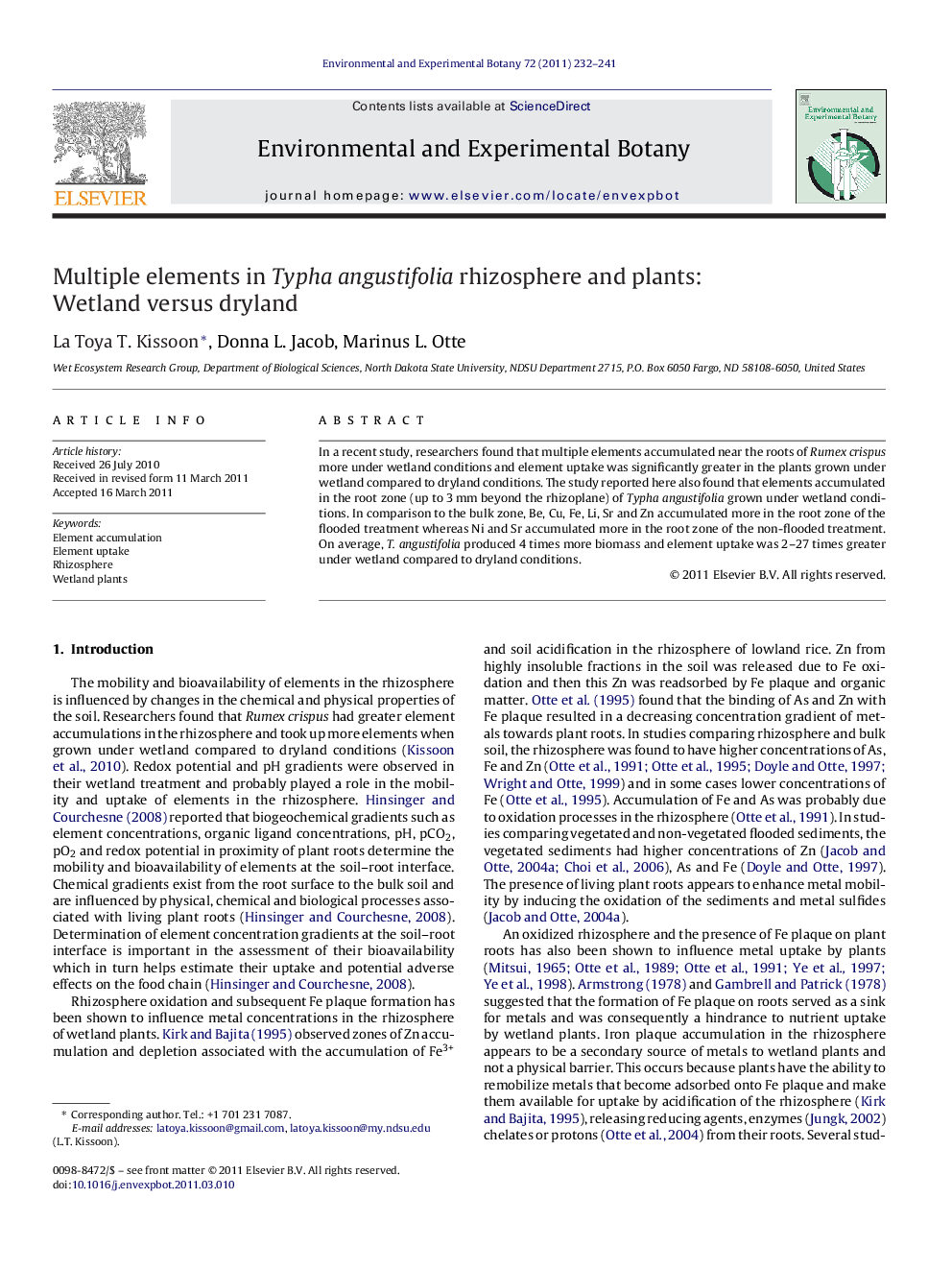| Article ID | Journal | Published Year | Pages | File Type |
|---|---|---|---|---|
| 4554770 | Environmental and Experimental Botany | 2011 | 10 Pages |
In a recent study, researchers found that multiple elements accumulated near the roots of Rumex crispus more under wetland conditions and element uptake was significantly greater in the plants grown under wetland compared to dryland conditions. The study reported here also found that elements accumulated in the root zone (up to 3 mm beyond the rhizoplane) of Typha angustifolia grown under wetland conditions. In comparison to the bulk zone, Be, Cu, Fe, Li, Sr and Zn accumulated more in the root zone of the flooded treatment whereas Ni and Sr accumulated more in the root zone of the non-flooded treatment. On average, T. angustifolia produced 4 times more biomass and element uptake was 2–27 times greater under wetland compared to dryland conditions.
► Element accumulation occurs in the root zone under wetland conditions. ► Element accumulation in the root zone leads to increased root exposure under wetland conditions. ► Element uptake is greater in plants grown under wetland compared to dryland conditions.
